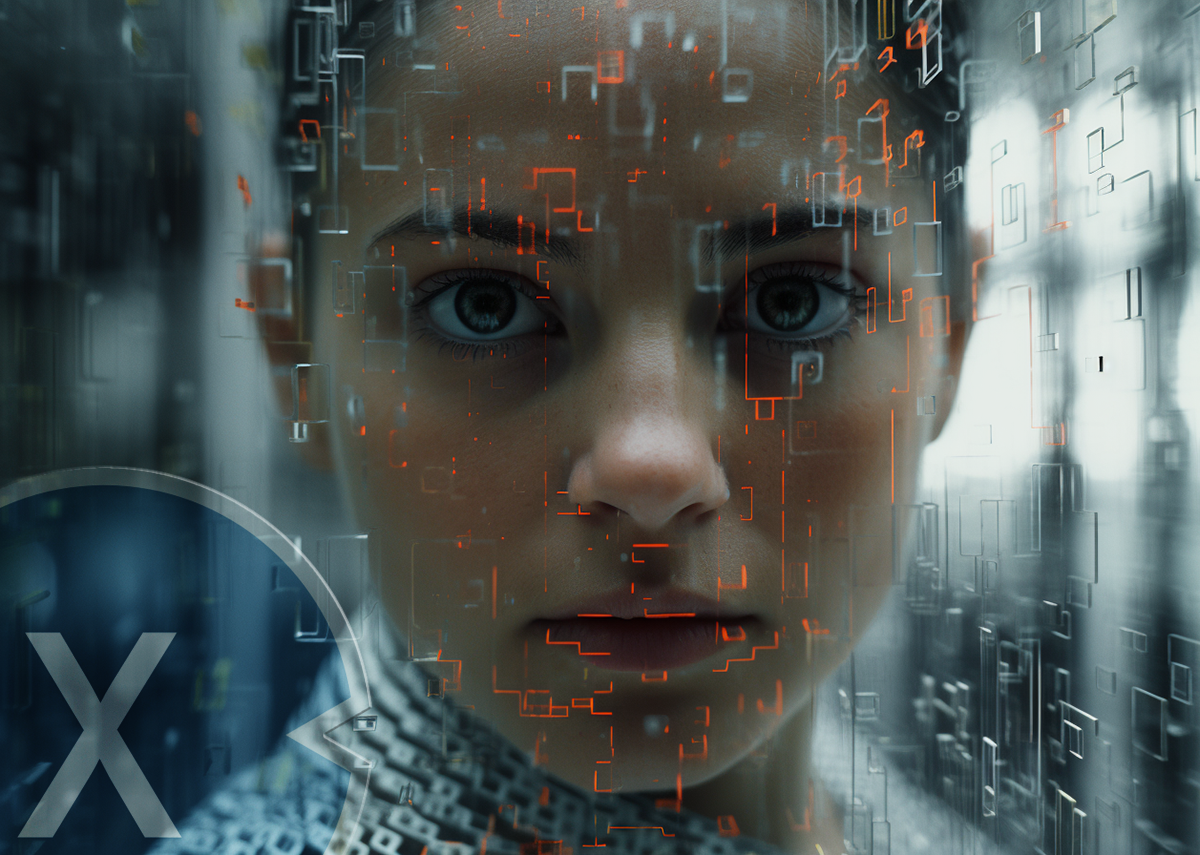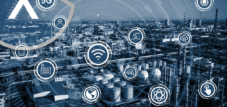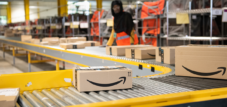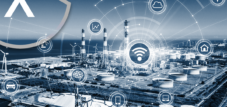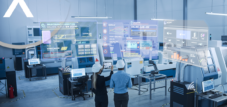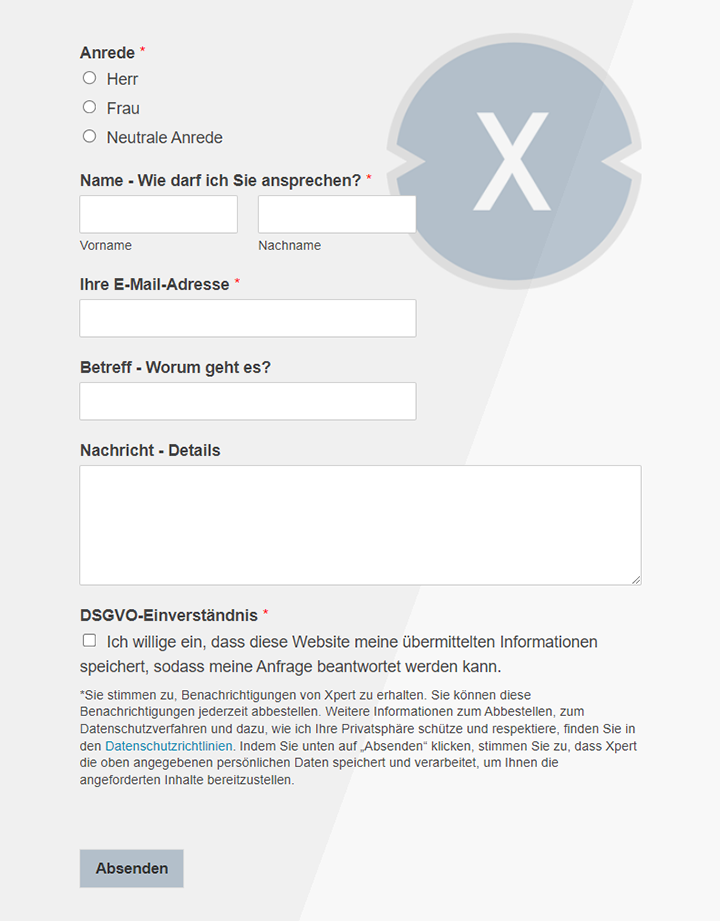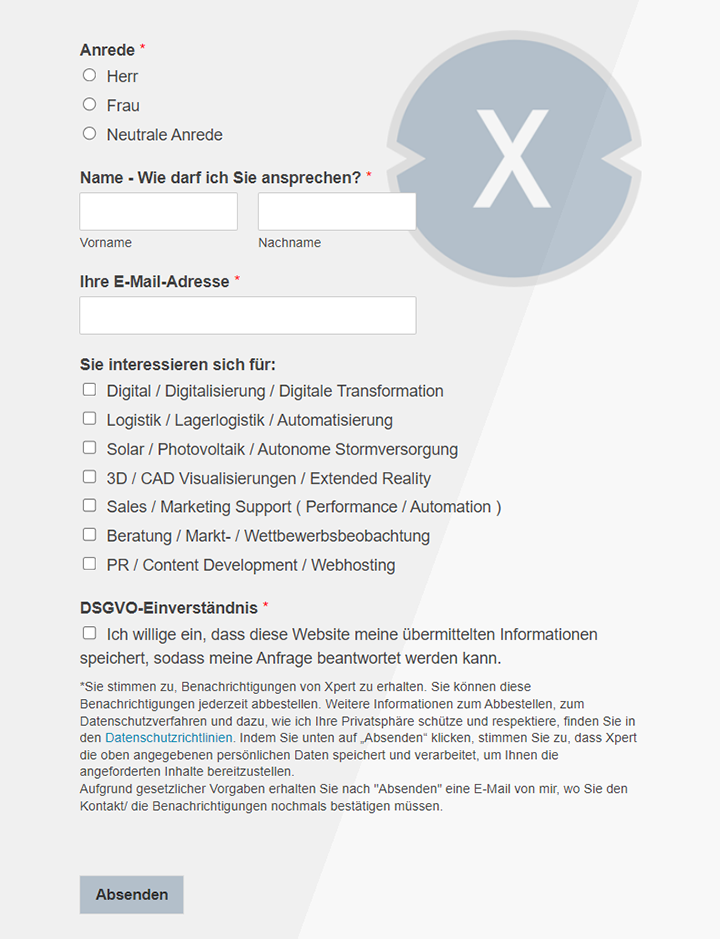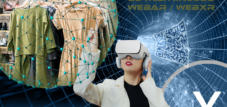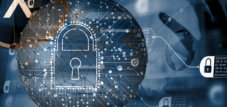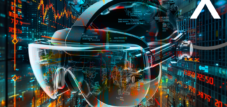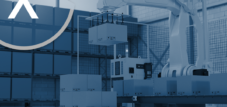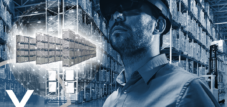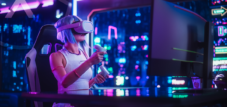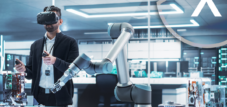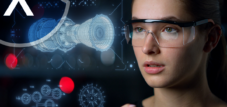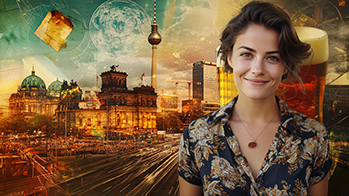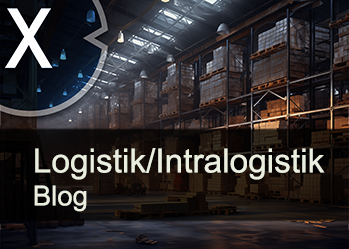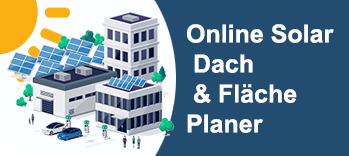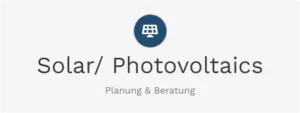Holistic visual tracking methods in the context of 2D matrix code, metaverse and XR technologies, blockchain and AI
Language selection 📢
Published on: March 4, 2024 / update from: August 30, 2024 - Author: Konrad Wolfenstein
📡 On the way to next-generation intralogistics: Technological breakthroughs with 5G and 6G
🌀 In the world of logistics and conveyance, whirlwinds of innovation are constantly at work, with the latest technological developments constantly seeking ways to bring efficiency, accuracy and speed to the flow of internal processes. Digitalization plays a crucial role here and is driving the sector forward with ever new methods. A particularly insightful example of these efforts is the development and implementation of holistic visual tracking procedures, especially with regard to the use of 5G and future 6G technologies to revolutionize intralogistics - the organization, control, implementation and optimization of internal material flow and information flow processes .
The transferability of holistic visual tracking methods to the world of 5G/6G-driven intralogistics processes aims to build a bridge between current research and practical application by shedding light on the current state of the art, the algorithms used and the resulting requirements.
📈 Current development status
Visual tracking technologies have made significant advances in recent years. Originally simple inventory tracking systems have evolved into complex solutions capable of performing a variety of tasks in real time. These technologies use cameras and sensors to identify, track and analyze objects within a room. Advances in AI and machine learning have dramatically increased the efficiency and accuracy of these systems, making them essential tools in modern logistics.
🖥️ Algorithms in use
The algorithms used in visual tracking systems are diverse and complex. Some of the most commonly used methods include:
Object detection and classification
These algorithms detect objects in video images and assign them to categories based on learned features. Techniques like CNNs (Convolutional Neural Networks) are particularly powerful in this category.
Object tracking
Once detected, objects must be tracked across time and space. Object tracking algorithms must take into account changes in object size, shape, color and speed, as well as be able to handle disappearing and reappearing objects.
Data fusion
This combines data from different sensors or across time points to improve the accuracy of object detection and tracking.
📡 Requirements for 5G/6G-driven intralogistics processes
The integration of holistic visual tracking methods into 5G/6G-driven intralogistics processes brings with it specific requirements:
1. High data transfer rates
Visual tracking systems generate enormous amounts of data that must be transmitted quickly and reliably. 5G and the future 6G standard promise the necessary bandwidth and speed.
2. Low latency
For real-time applications such as those found in intralogistics, small delays in data transmission are essential. 5G and 6G are designed to offer extremely low latency.
3. High precision tracking
Intralogistics processes require a high level of accuracy when tracking objects to ensure efficiency and safety. This requires highly developed algorithms and powerful data processing capacities.
🚀 The road to the future
The transferability of holistic visual tracking methods to 5G/6G-driven intralogistics processes opens up a world of new possibilities. Here are some key areas that could benefit from this development:
Automated warehousing
Fully automated warehouses, in which objects are tracked, stored and removed by intelligent systems, could work much more efficiently and error-free.
Precision logistics
The ability to precisely know the location of any object in real time is revolutionizing the planning and execution of logistical processes.
Security improvements
By monitoring goods movements more closely, security protocols can be improved and theft or loss minimized.
🚀 Pioneering technologies in logistics: The revolution through 5G and 6G
The integration of holistic visual tracking methods into 5G and 6G networks has the potential to fundamentally change intralogistics. However, this requires extensive research efforts, extensive testing and the development of new standards, both at a technical and regulatory level. Nevertheless, with the constant advancement of technology and the increasing willingness of industry and society to embrace these innovations, a future in which sophisticated visual tracking systems form the basis for efficient, safe and innovative intralogistics no longer seems far away.
📣 Similar topics
- 🔍 Technological innovation in intralogistics
- 🛠️ The future of visual tracking methods
- 📡 5G/6G and the revolution in intralogistics
- 💡 New Horizons: Holistic Tracking Methods
- 🚀 Intralogistics in the age of 5G/6G
- 🔬 Research and practice: Visual tracking in intralogistics
- 📦 Automation through visual tracking
- 🔒 Safety and efficiency: intralogistics redefined
- 💻 Digital transformation in logistics
- 🔄 The evolution of visual tracking technologies
#️⃣ Hashtags: #Technology #Intralogistics #5G #6G #VisualTracking
📌 Other suitable topics
🎯🎯🎯 Benefit from Xpert.Digital's extensive, fivefold expertise in a comprehensive service package | R&D, XR, PR & SEM

AI & XR 3D Rendering Machine: Fivefold expertise from Xpert.Digital in a comprehensive service package, R&D XR, PR & SEM - Image: Xpert.Digital
Xpert.Digital has in-depth knowledge of various industries. This allows us to develop tailor-made strategies that are tailored precisely to the requirements and challenges of your specific market segment. By continually analyzing market trends and following industry developments, we can act with foresight and offer innovative solutions. Through the combination of experience and knowledge, we generate added value and give our customers a decisive competitive advantage.
More about it here:
📡 On the way to next-generation intralogistics: Technological breakthroughs with 5G and 6G
🌐 The ongoing development and implementation of 5G and, in the foreseeable future, 6G networks will also play a crucial role in how quickly and efficiently this vision can become a reality. Not only do these networks provide the capacity and speed needed to transmit large amounts of data, but their low latency and high reliability are essential for real-time tracking and control, which are essential in intralogistics.
🔑 Challenges and solutions
🔒 Data security and privacy
As the amount of data generated by visual tracking systems increases, so do security and privacy requirements. Solutions could lie in the development of improved encryption technologies and the establishment of stricter data protection guidelines.
🔗 Interoperability
The large number of devices and systems used in intralogistics require high standards of interoperability. Industry-wide standards and protocols are required to ensure smooth communication and integration.
💡 Energy efficiency
The operational safety and environmental sustainability of 5G/6G networks and visual tracking systems are of central importance. Advances in energy storage and transmission, as well as more energy efficient technologies, will be critical to ensuring the sustainability of these systems.
🚀 The way forward
Research and Development
Universities, research institutions and companies must work together to push the boundaries of current technology and develop novel solutions.
Regulatory framework conditions
Lawmakers and regulators must create policies and standards that promote innovation while protecting consumers and businesses.
Industrial cooperation
Sharing knowledge and technology between companies and industries will be crucial to developing interoperable systems that enable widespread adoption.
⚙️ 5G/6G and holistic visual tracking methods
The vision of intralogistics driven by 5G/6G and holistic visual tracking methods is undoubtedly ambitious, but the benefits it promises are far-reaching. From huge increases in efficiency to improved safety and a new level of automation, this technological revolution could fundamentally change the way we think about and manage logistics and material flow. It will require a concerted effort from all social and economic actors to realize this future. But given the pace of technological change and the commitment of many leading players in the field, it seems only a matter of time before this vision becomes a reality. The path to get there is complex and full of challenges, but the direction is clear: forward to a networked, intelligent and efficient future of intralogistics.
📣 Similar topics
- 🚀 The future of intralogistics: 5G and 6G in focus
- 💡 Challenges and solutions for intralogistics
- 🔒 Data security and data protection in intralogistics
- 🤝 Interoperability in intralogistics: standards and protocols
- 🌱 Energy efficiency in 5G/6G networks and visual tracking systems
- 🔬 Research and development for the future of intralogistics
- 📜 Regulatory framework for innovative intralogistics solutions
- 🤝 Industrial cooperation: collaboration for interoperable systems
- 🔍 The future of intralogistics: Holistic visual tracking methods
- ⏭️ The path to a networked, intelligent and efficient intralogistics future
#️⃣ Hashtags: #Intralogistics #5G #6G #Data Security #Interoperability
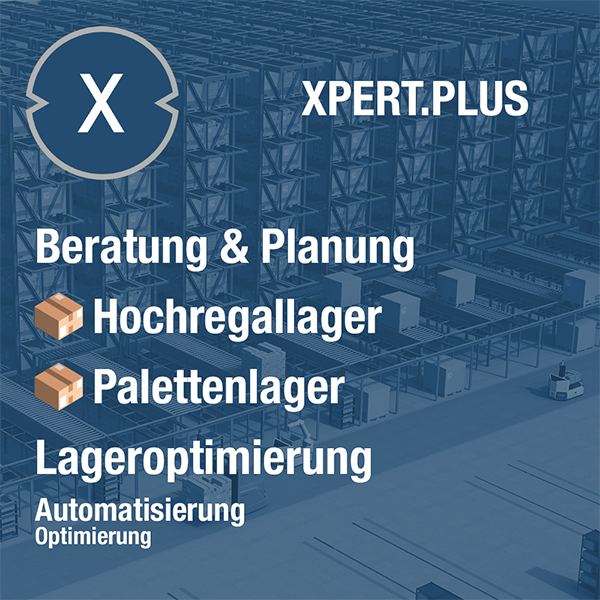
Xpert.Plus warehouse optimization - high-bay warehouses such as pallet warehouses consulting and planning
🔍🔗 Technological changes in the digital world: A profound transformation
🥽🚀 Today, there is the rapid development and integration of technologies such as 2D matrix code, metaverse, extended reality (XR) technologies, blockchain, artificial intelligence (AI), generative adversarial networks (GANs), and advanced forms of transfer learning Revolution in many industries. These technological advances have fundamentally changed the way we interact with digital worlds, ensure the security and transparency of transactions, and how we learn and create. A key aspect that connects these technologies and maximizes their application potential is the development and implementation of holistic visual tracking methods.
🔍 Holistic visual tracking methods
Holistic visual tracking techniques are sophisticated methods for tracking and interpreting visual data. These procedures are able to not only recognize simple movements or changes, but also to capture and interpret complex scenes holistically. In the context of digital technologies such as 2D matrix code, the metaverse, XR, blockchain, AI, GANs and advanced transfer learning, they provide fundamental support.
🌐 Application in Metaverse and XR
In the Metaverse and XR (Virtual Reality, Augmented Reality and Mixed Reality) environments, holistic visual tracking techniques are essential for creating immersive, realistic and interactive experiences. They make it possible to capture user movements in real time and seamlessly adapt the digital world to physical movements. This not only improves the user experience, but also encourages the development of new application areas, from education to entertainment.
🔗 Integration with blockchain and AI
The integration of blockchain technologies promises greater security and transparency. In conjunction with holistic visual tracking methods, transactions in the Metaverse or in XR environments can be mapped securely and comprehensibly. In addition, the connection with artificial intelligence enables these processes to be continuously improved and adapted. AI models can learn from massive amounts of visual data, detect patterns and make predictions, which in turn increases the accuracy and efficiency of tracking.
🎨 Generative Adversarial Networks (GANs)
GANs play a critical role in creating realistic digital content for the Metaverse and XR applications. By training GANs with extensive data sets of real objects and environments, extremely realistic digital copies can be created. Holistic visual tracking methods can more effectively integrate the content generated by GANs into digital environments by enabling seamless interaction between users and the generated elements.
📚 Advanced forms of transfer learning
In AI research, transfer learning is an approach that allows a model to use knowledge from one task to solve another, often only distantly related, task. This enables faster and more efficient adaptation to new challenges. In the context of visual tracking methods, transfer learning can help systems learn more quickly to interpret visual data from different sources and contexts, which is particularly advantageous in dynamic environments such as the Metaverse or in XR applications.
🚧 The challenges and the future
Although advances in holistic visual tracking techniques are impressive, we continue to face challenges. These include ensuring user privacy and data security, improving the accuracy and efficiency of algorithms, and creating standardized protocols for their integration into various technology platforms. Future development is likely to be characterized by an increasing focus on interoperable systems, improving cognitive AI capabilities, optimizing real-time rendering for complex environments, and dealing responsibly with the social and ethical implications of technological advances.
💡 Integration of holistic visual tracking methods
The integration of holistic visual tracking techniques into the ever-evolving areas of 2D matrix code, the metaverse, XR technologies, blockchain, AI, GANs and transfer learning represents a significant step towards a seamless, realistic and secure digital future .These technologies have the potential to fundamentally change the way we work, learn, communicate and create. While there are still many challenges to overcome, it is clear that progress in these areas will have a profound impact on our lives and society. The future promises a fascinating fusion of the physical and digital worlds, with the boundaries between them becoming increasingly blurred.
📣 Similar topics
- 🔥 The revolution in technology: Holistic visual tracking methods and their applications
- 🔮 The future of digital interaction: Holistic visual tracking methods in focus
- 🔗 The connection between blockchain and AI: Holistic visual tracking methods as the key to security
- 🌌 Realistic experiences: Holistic visual tracking methods in the Metaverse and XR
- 🎨 Creative possibilities: Holistic visual tracking methods and generative adversarial networks
- 🔄 Transfer learning and visual tracking: The future of AI
- 🎯 Challenges and opportunities: The integration of holistic visual tracking methods
- 🔒 Security and data protection: The importance of holistic visual tracking methods
- 🤔 The ethics of technological progress: Holistic visual tracking methods in discourse
- 🌐 The evolution of the digital world: Holistic visual tracking methods as a driver of change
#️⃣ Hashtags: #Technology #Metaverse #AI #Blockchain #XR
👁️ Holistic visual tracking methods
🎯 The term “holistic visual tracking process” means a collection of techniques and methods that are used in image processing and computer vision to visually pursue and analyze objects within a picture sequence. These procedures aim to assume a comprehensive view that not only looks at the pure visual features of an object, but also contains its relationship with other objects and elements within the scene and the dynamics of its movement. Holistic approaches stand out from traditional tracking methods by trying to better model the complexity of real scenarios and thereby achieve more precise and more robust tracking results.
🔄 At their core, holistic visual tracking methods strive to integrate a wide range of information about the object being tracked. This includes, among other things, the shape, color, texture and size of the object as well as contextual information about the environment. Leveraging these diverse data sources creates a more comprehensive picture of the tracking object, improving resilience to challenges such as occlusion, lighting changes, fast movement and background noise.
🧠 A key aspect of holistic tracking methods is the ability to integrate learning processes. Modern approaches often use machine learning, and in particular deep learning, to learn from datasets and train models that are able to effectively detect and track objects even under difficult conditions. By training on a rich database, these models can recognize complex patterns in the data, resulting in improved performance. The use of Convolutional Neural Networks (CNNs) and Recurrent Neural Networks (RNNs) has proven to be particularly effective because these network structures are specifically designed for analyzing visual content and modeling sequences and temporal dependencies, respectively.
🌐 In addition, integrating contextual information plays an essential role in improving tracking performance. This means that not only the object of persecution itself, but also its environment and its changes over time are considered. For example, the information that a pedestrian typically walks on sidewalks and not through buildings can be used to refine the probability distribution about the pedestrian's future position and improve tracking. The same applies to modeling group dynamics in crowds or considering physical laws that restrict the movement of objects.
💡 A key advantage of holistic approaches is their adaptability and flexibility. By continually learning from new data and adapting to changes in the scene, algorithms can remain robust to the diverse challenges they face in the real world. This capability is particularly important in applications where operational conditions can change rapidly, such as autonomous vehicle control, monitoring public spaces, or interacting with robots in unstructured environments.
🚧 However, implementing holistic visual tracking methods also presents challenges. One of the biggest difficulties is the high demand for computing power, especially when using deep neural networks. In addition, the collection, processing and analysis of large amounts of diverse data requires sophisticated algorithms and architectures. Privacy and ethical concerns are other important aspects that need to be taken into account, especially in applications that involve tracking people.
⏩ Despite these challenges, the development of holistic visual tracking methods has made significant progress in recent years. Advances in computing power, the availability of large data sets and the advancement of algorithms have opened up new possibilities. Applications such as intelligent video surveillance systems, interactive multimedia installations, augmented reality (AR) and virtual reality (VR), autonomous driving and advanced human-machine interaction systems are already benefiting significantly from these developments.
🔮 Future research could focus on further integrating contextual and semantic information to deepen the understanding of the scenes in which tracking occurs. In addition, new developments in AI, such as generative adversarial networks (GANs) and advanced forms of transfer learning, open up exciting opportunities to further improve the efficiency and accuracy of visual tracking methods. Ultimately, this could lead to even more intelligent and adaptive systems, capable of dealing with the complexity and dynamics of the real world in real time.
We are there for you - advice - planning - implementation - project management
☑️ Smart City & Factory: Industry expert for energetic 5G buildings and halls as well as advice and installation of solar systems
☑️ Xpert.Plus - logistics consulting and logistics optimization
☑️ Industry expert, here with his own Xpert.Digital Industry Hub with over 2,500 specialist articles
I would be happy to serve as your personal advisor.
You can contact me by filling out the contact form below or simply call me on +49 89 89 674 804 (Munich) .
I'm looking forward to our joint project.
Xpert.Digital - Konrad Wolfenstein
Xpert.Digital is a hub for industry with a focus on digitalization, mechanical engineering, logistics/intralogistics and photovoltaics.
With our 360° business development solution, we support well-known companies from new business to after sales.
Market intelligence, smarketing, marketing automation, content development, PR, mail campaigns, personalized social media and lead nurturing are part of our digital tools.
You can find out more at: www.xpert.digital - www.xpert.solar - www.xpert.plus



